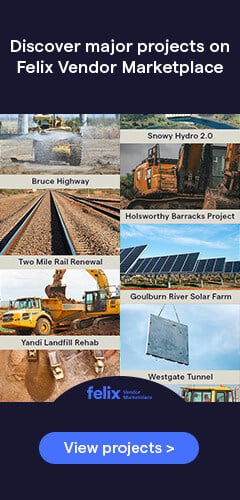We’ve seen a tonne of construction technologies enter the market in the past year. It’s hard to keep track of the latest being heralded as the next ‘must have’ tool to further your construction company. So, to help you out, we’ve created this list of 6 of the most promising technologies in construction in 2015 that are here to stay in 2016.
-
The DAQRI Smart Helmet
This is the hard hat of the future. The DAQRI Smart Helmet is a wearable technology designed for industrial applications. The helmet features a drop-down glass display under the visor and it connects to DAQRI’s Intellitrack – a patented interactive display that can recognise images and situations by using a camera and sensor found at the back of the helmet.
Curious how the helmet works? Check out the demo video below.
-
Ekso Bionics’ exoskeleton for construction workers
Ekso Bionics first developed exoskeletons for handicapped and paraplegic (motor and sensory impaired) individuals. Like other tech and engineering companies, Ekso saw an opportunity in the construction industry. They have developed a 16-pound exoskeleton which construction workers can wear. The exoskeleton functions by using counterbalances which distributes weight and allows the wearer to hold on to heavy loads with just little to no effort.
Watch Wired Magazine’d Adam Rogers test the exoskeleton below
-
Bio Concrete: the self-healing concrete
Dutch scientist, Henk Jonkers discovered that by adding a bacteria named Bacillus to concrete, the concrete will have the ability to re-grow and self-heal when it comes in contact with moisture. Due to concrete’s rigid structure, it is prone to cracking. When concrete is damaged, it can cause structural issues such as moisture and air infiltration as well as other aesthetic issues.
Check out the video below to understand more about how Bio Concrete works
-
Topmix Permeable stronger concrete
Flooding and water runoff are often the enemy to construction sites across Australia. The company Topmix has developed a stronger permeable concrete which allows water to pass through the concrete and get absorbed by the surrounding soil.
Watch the thirsty concrete consume 1,000 gallons of water below
-
Fatigue monitoring system by CAT
Fatigue is a major issue in the construction industry. Workers who are tired are more likely to get into on-site accidents. CAT has recently developed a tool which monitors an equipment operator’s facial movements to determine if they are at risk of falling asleep on the job.
Watch how this system works on the video below
6. PlantMiner
Sourcing plant and equipment can be a lengthy process. PlantMiner’s technology streamlines the procurement process by finding the right equipment you need based on your location and item specifics. Accessibility is the key to our mobile technology. PlantMiner will help you procure rates for major projects, tenders, spot hire, and even replacement equipment during construction with just a few clicks.
Perich Constructions can testify for this after they had a crane break down on-site. The PlantMiner team were able to source him a replacement crane from a local supplier within a matter of minutes, and arriving on-site within the hour.
There's a variety of reasons why it’s important to stay on top of the emerging trends in your field. Most importantly, automation and process streamlining - making the creation of infrastructure take less time. But we know it’s time consuming to do this on top of your existing tasks, so we’ve turned Felix Project News into the one-stop-shop for all of your industry news, product information and more. And the best news - it can be sent directly to your inbox. Just subscribe here.
Related Articles

$2.4-bil Level Crossing Removal project to be fast-tracked during Easter holiday
The $2.4 billion Level Crossing Removal project, which aims to remove 50 congested and dangerous level crossings in Melbourne, will be fast-tracked over the Easter period. Three of the worst level crossings in the area - North Road in Ormond, McKinnon Road in McKinnon and Centre Road in Bentleigh - will be removed months ahead of schedule.

Want to rank better in search? SEO Series Part 1
In June of 2015, there were roughly 12.8 million internet users in Australia. And as mobile technology spreads to the construction industry, it's become a pretty smart idea to take your business online.

5 project management tips for new construction managers
Managing a construction site takes a lot of work and it could be overwhelming for someone who is fairly new to the industry. As a construction manager, you are responsible for managing a portfolio or projects, communicate effectively with operational teams, engage stakeholders, manage site managers, undertake quality management and assurance and most importantly, ensure the project is running on time and within budget.
Get the latest project news
- updates on Australia's pipeline of state and federal projects
- fresh contract awards from major contractors and builders
If you're looking to contact us about other matters, please contact us.


